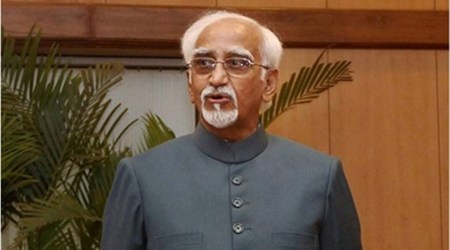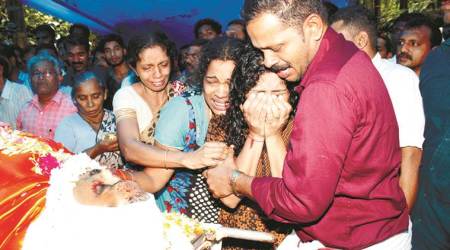 The suffering of these women branded as witches is more than just about their brutal deaths, sometimes from lynching; their lives are a relentless story of violence, abuse and terror. (Representational image)
The suffering of these women branded as witches is more than just about their brutal deaths, sometimes from lynching; their lives are a relentless story of violence, abuse and terror. (Representational image)
There is no denying the fact that we have entered a particularly aggressive, militarized and masculine phase of Indian polity and society. A dominant feature of these times is that women appear to be disappearing from and written out of public spaces and cultural narratives. This is more evident in towns and villages far away from the metros, where women are at the receiving end of violence. These parts of India remain unaffected by the displays of ‘national’ outrage and cacophonous media debates on mob violence or lynchings.
The UN-declared International Day of the World’s Indigenous Peoples on August 9 is an opportune time to reflect on one of the most common forms of violence experienced by tribal or adivasi women in India – witch-hunting, where women are accused of possessing occult powers to harm others. A combination of superstitious beliefs, religious practices and patriarchal norms unleashes lifelong suffering on women accused of witchcraft, in many cases resulting in their murders and lynchings.
Witchcraft, in the urban imagination, is part of myths and stories and foreign folklore. Many of us were regaled by stories of Baba Yaga in Russian folktales and the witch in the German fairy-tale of Hansel and Gretel. We learnt about the European witch-hunt of the Middle Ages through history textbooks which recounted the fact of women being charged with apostasy and heresy and consequently burnt at the stake for sorcery.
Sadly, in many parts of India, witchcraft is neither a thing of the past nor a part of entertaining stories from abroad. In fact, witchcraft-related deaths are reported every third day, with the majority of the victims being women. The situation appears grave across the North Indian heartland, from Bihar and Jharkhand to Chhatisgarh, Madhya Pradesh and West Bengal, from Rajasthan in the west to Assam in the east.
The suffering of these women branded as witches is more than just about their brutal deaths, sometimes from lynching; their lives are a relentless story of violence, abuse and terror. Not to take away from the horrific mob lynchings of Muslims recently, but the fact remains that we are hardly as outraged over the torture, rape and murders of tribal, rural women in the name of witch-hunting. These stories are mostly passed over; the accused goes unpunished.
Despite anti-witchcraft acts legislated in most states, witch-hunting continues with impunity. Jharkhand has the dubious distinction of being the leader among states with the most witch-hunting death cases. According to the National Crime Records Bureau (NCRB) data, from 2008 to 2013, Jharkhand saw 220 witch-hunting related murders of women. As per police records, 98 deaths and 1,857 incidents of witch-hunt have occurred from 2014 to 2016 in Jharkhand alone. August 7served as the painful reminder of the first anniversary of the horrifying deaths of five Oraon women in a village near Ranchi, all of whom were tortured and hacked to death last year, after being branded as witches.
Bihar is no different. Childhood memories of my village in Madhubani district include being witness to conversations about who in the village possessed occult or supernatural powers. In hushed tones, a grand aunt (an elderly widowed woman) was declared a witch; we were advised to stay away from her evil powers. Thankfully, no physical harm came to her as she died a natural death, but her isolation and social ostracism was complete.
From 2015 -2017, more than 250 women were subjected to witch-hunting in Bihar. In March 2017, Ramavati Devi, a Dalit woman from Purnea was burnt alive by her neighbours who suspected her of practicing witchcraft. Early this week, Phool Kumari Devi’s mutilated body was recovered from the railway track in Bhagalpur on August 7. She was kidnapped from her home by assailants armed with weapons who blamed her for practicing witchcraft. It is suspected that she was raped and then murdered. Justice in most of these cases is a far cry.
Not a single day goes by without local reports or some form of public acknowledgement of violence against women in the name of witch-hunting. The roots of this violence are not only in the specific religious or cultural beliefs and superstitions but also in the cold calculations of patriarchal mindsets, in the connivance to deprive women of land and property, to take revenge where women refuse sexual advances and to punish women for petty disputes. Poor health care facilities in rural areas and lack of sustained awareness programmes, implementation of laws and informed government intervention exacerbate the problem.
The complexity of this issue and its punitive dimensions can be found in the blurring of boundaries between protector and perpetrator. Like other mob lynching cases it is difficult to identify the perpetrators and bring them to justice.
For the survivors of this violence, the scars run deep as the perpetrators are often members of their own family, neighbourhood and community.
In Jharkhand for example, witch-hunting is practised by adivasi men against adivasi women but the identity politics of adivasi vs non-adivasi makes it difficult to acknowledge patriarchal violence within the adivasi community. Adivasi women lynched for witch-hunting by their own kith and kin hardly evoke outrage among human rights activists as they supposedly confuse the separation of perpetrators from victims. The absence of a strong feminist movement on this issue adds to the complexity of the crime.
The real resistance is being offered by women themselves, as among the witch-hunted are those who dare to challenge patriarchal norms and superstition. Poonam Toppo, an activist in Ranchi, whose grandmother was stigmatized as a witch and subjected to abuse and violence, has been fighting this practice with her small team of social workers. Anytime a woman is blamed for causing physical illness of another, Toppo and her team provide medical treatment for the patient and then raise awareness about false witchcraft allegations. These efforts are localized, socially sensitive and thus, effective.
Meanwhile, Ramavati Devi, Phool Kumari Devi, Eitwariya, Jesinth, Kalki, Titri and Madni Khalkho and others like them await justice in death; their lives cut short by the familiar banality of gendered violence through witch-hunting. As we remember the other struggles of adivasi people, we must recognize that witch-hunting is very real and that, in fact, it is treated as “business as usual” by adivasi, Dalit and other women in many parts of India.

